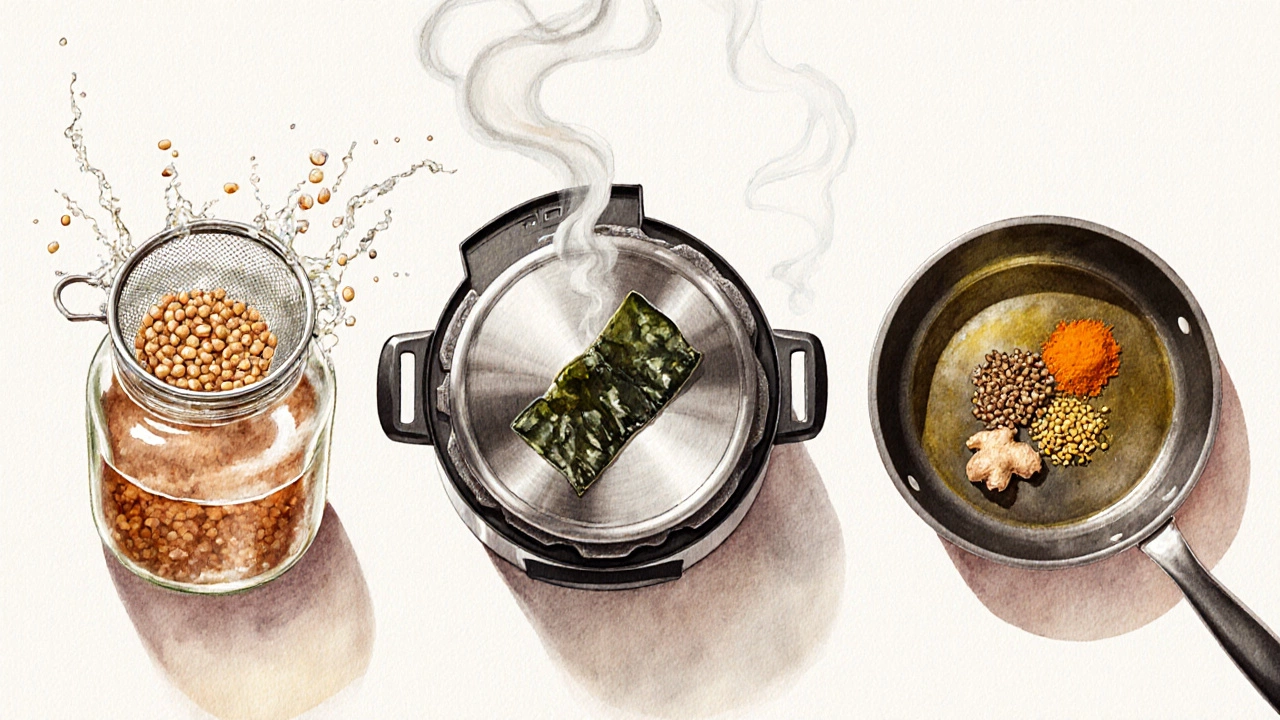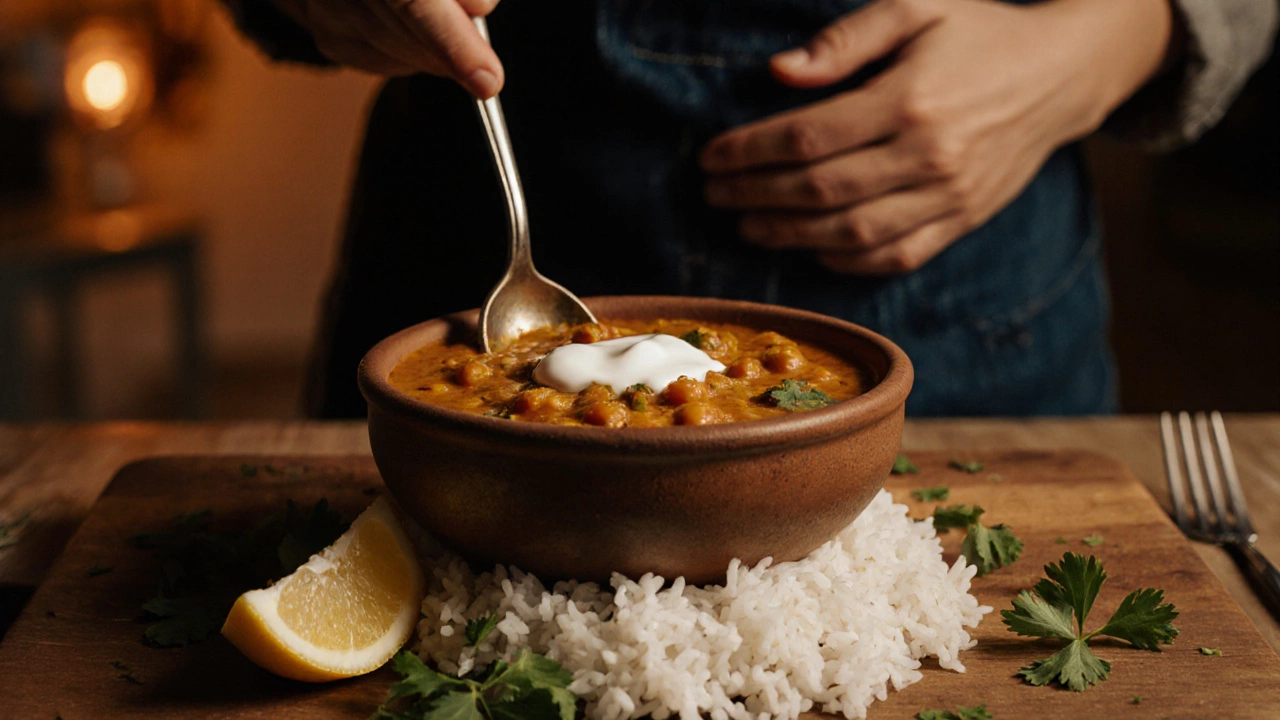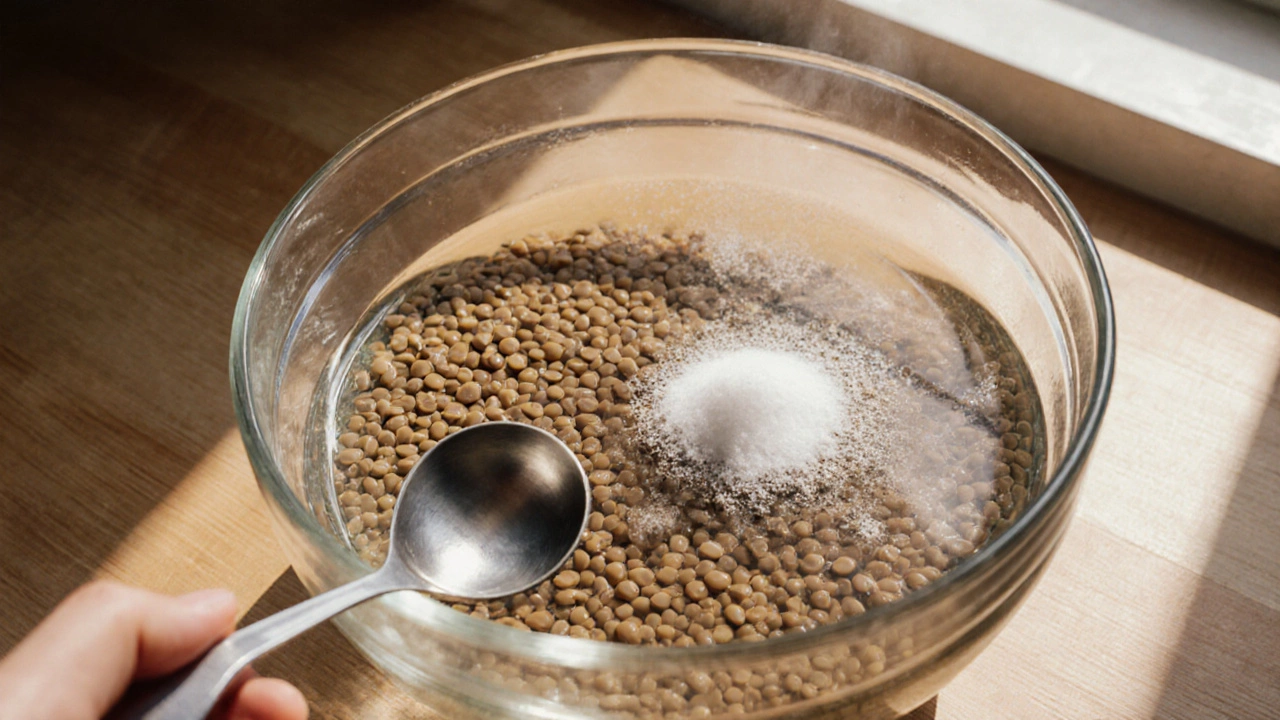Lentil Gas Reduction Estimator
Estimate how much gas production you can reduce by using these digestion-friendly techniques
Estimated Gas Reduction
Pro Tip: The article suggests combining all techniques for maximum gas reduction. Your best results come from using soaking + pressure cooking + spices together!
Ever wonder why a comforting bowl of lentils can leave you feeling bloated? The answer lies in a few natural compounds that your gut struggles with. Luckily, a handful of kitchen tricks can turn that gassy experience into a smooth‑digesting delight, perfect for everyday dal.
What makes lentils gassy?
When you cook lentils, two main culprits release gas during digestion:
- Lentils are rich in oligosaccharides, a type of sugar that human enzymes can’t break down easily.
- They also contain phytic acid, which can bind minerals and speed up fermentation in the large intestine.
The result? Your gut bacteria feast on these leftovers, producing carbon dioxide, hydrogen and sometimes methane. The good news? Simple preparation steps can slash those numbers dramatically.
Start with a good soak
Soaking is the single most effective way to leach out the gas‑forming sugars. Here’s a quick routine:
- Rinse lentils under cold water until the water runs clear.
- Place them in a bowl and cover with three times their volume of water.
- Add a pinch of Baking soda (about ¼ teaspoon per cup) - it raises the pH and helps break down oligosaccharides.
- Let them sit for 4‑6 hours; for tougher varieties like brown or black lentils, stretch to overnight.
- Drain, rinse again, and you’re ready to cook.
Tip: If you’re short on time, a hot‑water soak (boiling for 2 minutes, then off‑heat) works almost as well and reduces the overall cooking time.
Rinse, rinse, rinse
After soaking, give the lentils a final rinse. This washes away the water‑soluble sugars that floated to the surface. A good practice is to swirl them in a fine‑mesh sieve under running water for 30 seconds.
Pressure cooker magic
Pressure cooking not only speeds up the process but also forces the steam into the lentil cells, breaking down stubborn compounds. Follow these steps:
- Add soaked, rinsed lentils to the cooker with fresh water (ratio 1:2 for red lentils, 1:3 for brown).
- Add a pinch of salt and a thin slice of Kombu (a seaweed that adds glutamates and helps soften fibers).
- Seal the lid, bring to high pressure, and cook for 5‑7 minutes for red lentils, 12‑15 minutes for brown or green varieties.
- Let the pressure release naturally for 5 minutes, then quick‑release any remaining pressure.
The result is tender lentils with far fewer gas‑producing residues.

Digestive‑aid spices
Indian kitchens have long used certain aromatics to tame flatulence. Add any of these to your dal base:
- Asafoetida (hing) - just a pinch, crushed with a little oil, neutralises the sulfurous smell and curbs gas.
- Ground cumin - ½ teaspoon per cup of lentils adds flavor and supports digestion.
- Turmeric - ¼ teaspoon gives anti‑inflammatory benefits and a bright hue.
- Grated ginger - 1 teaspoon per pot helps move food through the gut.
- Bay leaf or a few cloves - optional but they add subtle depth.
Saute the spices in a tablespoon of oil or ghee before adding the cooked lentils. This “tempering” step releases their essential oils, making them more effective.
Change the cooking water
Some home cooks swear by discarding the first batch of boiling water and starting fresh. The science? That first boil extracts the most oligosaccharides. Here’s a no‑fuss method:
- Bring a pot of water to a rapid boil.
- Add the soaked lentils and boil for 2‑3 minutes.
- Drain immediately, rinse, and then proceed with your preferred cooking method.
This extra step can shave off up to 30 % of the gas‑forming compounds.
Serve with digestion‑friendly sides
Pairing your dal with certain foods can further reduce bloating:
- Plain yogurt or buttermilk - the probiotics help break down remaining sugars.
- Lemon juice - a splash of acidity aids enzyme activity.
- Fresh coriander - adds a refreshing note and mild carminative effect.
A simple serving: ladle hot dal over steamed rice, drizzle a teaspoon of yogurt, and finish with a squeeze of lemon.

Common pitfalls and how to avoid them
Even experienced cooks slip up. Here’s a quick cheat sheet:
- Skipping the soak: Leads to tougher beans and more gas.
- Using too little water: Causes scorching and incomplete leaching.
- Adding salt too early: Salt tightens the seed coat, making the beans harder to soften.
- Over‑cooking: While soft beans are easier to digest, turning them mushy can release more starches into the broth.
- Forgetting the tempering spices: You lose the anti‑gas benefits of hing, cumin, and ginger.
Keep this list handy the next time you prep a pot of dal.
Quick checklist before you start
- Rinse lentils thoroughly.
- Soak for 4‑6 hours; add a pinch of baking soda.
- Rinse again after soaking.
- Choose your cooking method - pressure cooker, stovetop, or quick‑boil.
- Gather anti‑gas spices: asafoetida, cumin, turmeric, ginger.
- Prepare a side of yogurt or a lemon wedge.
Mini FAQ - your lingering questions answered
Does soaking eliminate all the gas‑forming compounds?
Soaking removes a large portion-about 40‑50 %-but not every molecule. Combining soak with spices, pressure cooking, and fresh water gives the best result.
Can I use canned lentils to avoid gas?
Canned lentils are already cooked, but they often contain added salt and preservatives that don’t help with gas. Rinse them well and still add asafoetida or cumin for relief.
Is baking soda safe for regular use?
A pinch per cup is safe and won’t affect flavor. Overusing it can make lentils mushy, so stick to the recommended amount.
Why do some people recommend adding kombu?
Kombu supplies natural glutamates that break down cell walls, letting water penetrate faster and releasing fewer oligosaccharides.
Can I apply these tricks to other beans?
Absolutely. Chickpeas, black beans, and kidney beans all benefit from soaking, a pinch of baking soda, and the same carminative spices.
With these steps, your next pot of dal will be hearty, flavorful, and gentle on the belly. Happy cooking!
